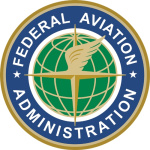- Industry: Government
- Number of terms: 35337
- Number of blossaries: 0
- Company Profile:
A condition that exists when landing on a surface with standing water deeper than the tread depth of the tires. When the brakes are applied, there is a possibility that the brake will lock up and the tire will ride on the surface of the water, much like a water ski. When the tires are hydroplaning, directional control and braking action are virtually impossible. An effective anti-skid system can minimize the effects of hydroplaning.
Industry:Aviation
Rules that govern the procedure for conducting flight in weather conditions below VFR weather minimums. The term “IFR” also is used to define weather conditions and the type of flight plan under which an aircraft is operating.
Industry:Aviation
The electrical device used to provide the spark for starting combustion in a turbine engine. Some igniters resemble spark plugs, while others, called glow plugs, have a coil of resistance wire that glows red hot when electrical current flows through the coil.
Industry:Aviation
Ice that forms on the wings and control surfaces or on the carburetor heat valve, the walls of the air scoop, or the carburetor units during flight. Impact ice collecting on the metering elements of the carburetor may upset fuel metering or stop carburetor fuel flow.
Industry:Aviation
An instrument consisting of a curved glass tube, housing a glass ball, and damped with a fluid similar to kerosene. It may be used to indicate inclination, as a level, or, as used in the turn indicators, to show the relationship between gravity and centrifugal force in a turn.
Industry:Aviation
The direct instrument reading obtained from the airspeed indicator, uncorrected for variations in atmospheric density, installation error, or instrument error. Manufacturers use this airspeed as the basis for determining airplane performance. Takeoff, landing, and stall speeds listed in the AFM or POH are indicated airspeeds and do not normally vary with altitude or temperature.
Industry:Aviation
The altitude read directly from the altimeter (uncorrected) when it is set to the current altimeter setting.
Industry:Aviation
That part of total drag which is created by the production of lift. Induced drag increases with a decrease in airspeed.
Industry:Aviation
The part of the engine that distributes intake air to the cylinders.
Industry:Aviation
